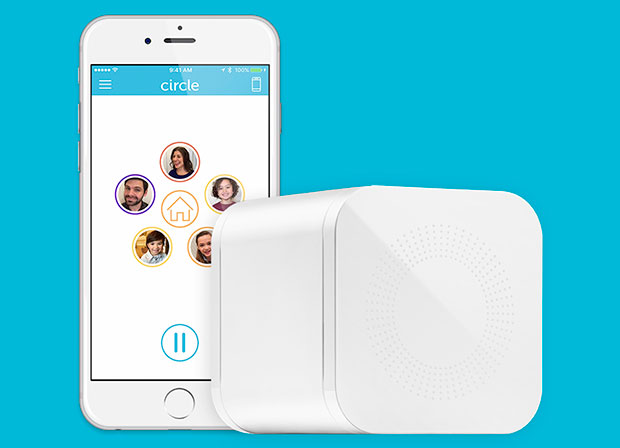Circle Media and Disney Interactive on Wednesday launched Circle With Disney, a device that gives parents greater control over the management of their children’s online activities.
Circle With Disney provides curated Disney content through a licensing agreement. Paired with a companion iOS app, it allows users to limit and filter content streaming to a variety of devices including tablets, smartphones, gaming consoles and personal computers.
The device is nowavailable from Circle for US$99, and is coming soon to the online DisneyStore. The companion app can be downloaded for free from the iTunes App store.
Not Replacing Mom and Dad
The aim is not to break the trust bond between parents and children, but to help parents “stimulate a conversation” with their kids about what they are viewing or listening to on the Internet, said Circle Media founder Jelani Memory.
“We don’t want to replace that relationship or hurt it — we want to help it,” she told the E-Commerce Times. “We don’t see Circle as a snooping device or one you use without your kid’s knowledge. It’s like a pantry. Parents choose what goes in it, and the kids can take food from it.”
Disney will provide an exclusive range of content, including videos, blogs, music, games, favorite characters, emojis and more. Parents will be able to create individual profiles for each child and customize the kind of content they can access and for how long.
Disney’s Consumer Products and Interactive Media Labs team, which is a unit that creates products based on existing or emerging technologies at the company, reached out to work with Circle on the new technology.
“Circle with Disney is the first screen time management product Disney has been involved with,” said Disney spokesperson Kaitlyn Henrich.
“As the top producer of kids’ content, Disney is committed to helping parents find the digital lifestyle that works for their home,” she told the E-Commerce Times.
Disney is not the first content provider to have an app that helps parents filter material on the Web.
Google earlier this year announced YouTube Kids, a mobile app that offers curated content for children. Its controls allow parents to limit the amount of time kids are watching. They also can control volume and turn off the search feature.
“Overall, the new Circle with Disney solution appears to offer finer-grained performance than other content monitoring products,” said Charles King, principal analyst at Pund-IT. “First, it allows parents to monitor and manage the online material their kids consume via an easy-to-use app that can be used to control a WiFi router.
The app basically allows parents to call a “digital time-out for the entire household” at certain times a day, King said.
When the companies release the Circle Go subscription in 2016, which will allow access to 4G LTE, connected devices should make it even easier for parents to monitor activity, he added.
“If that transpires, the old ‘Do you know what your kids are doing?’ bromide may become a thing of the past,” King said.
Content Explosion
The desire to watch on-demand content, along with the explosion of new providers and new networks, means that children and teens increasingly will be able to access content that parents cannot control 24/7.
Products like Circle with Disney may be viewed as necessary tools to make sure that kids don’t spend too much time on the Web, and to make sure the content they access is age appropriate, according to Alan Simpson, vice president for policy and communication at the Internet Keep Safe Coalition.
“The environment has definitely grown more complex. It’s always been a challenge,” he told the E-Commerce Times, but “as kids get older, they understand the devices often better than their parents do.”
Teenagers aged 13-19 years old spent an average of nine hours a day using entertainment media, Simpson noted, citing a study Common Sense Media just released. “Tweens,” defined as children aged 8-12 years old, spent an average of six hours a day, not including the time their media use related to schoolwork.
There are wide gaps in media use by gender, race and income. Black teenagers, for example, used entertainment media more than 11 hours, 10 minutes per day, while Latino teens’ use averaged 8 hours and 51 minutes, and white teens’ use averaged 8 hours and 27 minutes per day, according to the study.
There also are huge gaps between those who have access to computers and those who don’t, based on income. About 92 percent of teens with more than $100,000 in family income had access to a laptop, while that was true for only 54 percent of teens with less than $35,000 in family income.
“The media and tech industry does have an opportunity to try and help families find a balance with the amount of time they spend with media and away from it,” Crista Sumanik, spokesperson for Common Sense Media, told the E-Commerce Times. “Ultimately, though, any tech solution can’t replace the role that parents have in talking with their kids about having a healthy daily media diet and making screen time count.”























































Social Media
See all Social Media